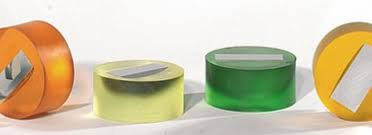
It is important to prepare a specimen in metallography as much as it is to analyze the specimen. Cold mounting is one of the commonest preparation techniques that are used to mount sensitive materials. The technique allows the scientists and technicians to retain the structural integrity of the preparation to be ground, polished and microscoped. Cold mounting contrasts with the heat and pressure-driven hot mounting, which also employs resin systems that cure at room temperature and therefore is more flexible as a solution to fragile and heat-sensitive specimens.
What Is Cold Mounting?
Cold mounting is a technique of fixation of a specimen in a resin that hardens without heating the product. The greatest advantage of this technique is that it does not imply the application of thermal and mechanical stress that would more likely alter or otherwise degrade the sample. The high temperature may result in loss of properties of materials such as coatings, electronic material, porous metals or alloys of low melting points. With cold mounting, it maintains the original features such that the original features are examined precisely and good results are obtained.
Cold mounting Resin types.
The resin selection is a key variable to the success of the cold mounting process. Metallographic applications are dominated by two general types:
Epoxy Resins
Epoxy systems are commended to be of low shrinkage, high adhesiveness and good mechanical strength. They are superior in edge retention which is required during study of finer details such as micro-cracks or coating. The epoxies usually require longer time to cure but they are clear and resistant and therefore the most convenient to store long time and precision work.
Acrylic Resins
Acrylics dry very fast, in fact, in several minutes. This makes them very suitable in the speed and efficiency-oriented laboratories. They are however capable of shrinking more than the epoxy which sometimes causes havoc to the quality of edges. Despite this drawback, use of the acrylic resins is prevalent where turn around is required.
There are other forms (conductive resins to apply in electron microscopy and colored resins that improve visual contrast during preparation).
Cold Mounting Process takes place in steps.
Specimen Preparation
The mold and the model must be dry. The orientation is done properly such that when it is mounted, the area of interest is available.
Mixing the Resin
Resin and hardener should be closely measured. The ratios of the resin type utilized are varied and the failure to blend the ratios would lead to failure to cure or bond.
Degassing
Bubbles Air bubbles are one of the typical problems of cold mounting. One can de-gas the mixture in a vacuum to decrease the volume of the voids before pouring.
Pouring the Resin
One should pour the resin gradually along the wall of the mold and this can be used to reduce turbulence that entraps bubbles.
Curing
Each resin has a promoted gel and cure period. Taking this step will be patience to ensure that the mount is stable and defect free.
Demolding and Finishing
The specimen, which is hardened, is removed out of the mold and ground and polished.
Typical Problems of Cold Mounting.
In spite of its merits, cold mounting has some problems:
Mounts can be Air Bubble weakened and blotted to analysis. Vacuum impregnation and mixing are assistance measures in insulating them.
Shrinkage Cracks may be built up with acrylics that dry in a short time. Low-shrinkage epoxy can be chosen to solve this.
Edge Pullback occurs when resin recedes in the curing process and that may affect surface detail. This is alleviated by ensuring that there is good resin selection and control of the curing environment.
The cause of incomplete Curing is poor ratios or poor curing time. It would be most suitable to use resin specifications.
Cold Mounting Uses.
Cold mounting is common where the integrity of the sample is required to be intact. Common uses are:
Sustaining delicate coatings or thin-films.
Porous analysis had structural analysis embedded materials.
Electronic components soldering in regions that could be heat sensitive where a solder joint or circuit can be considered.
Preparation of brittle or fragile samples by mechanical means.
Conclusion
Cold mounting is a necessary procedure in metallography, which provides a viable method of handling delicate and heat sensitive samples to be subjected to a microscope. The correct resin, adherence to the rules of mixing and curing, and prevention of possible issues allow technicians to have good and trustworthy mounts. Cold mounting, whether used in the industrial aspect of quality control or in the academic discipline research or failure analysis, continues to serve as a foundation of the modern material preparation, and assures that all of the material microstructural features are faithfully reproduced.